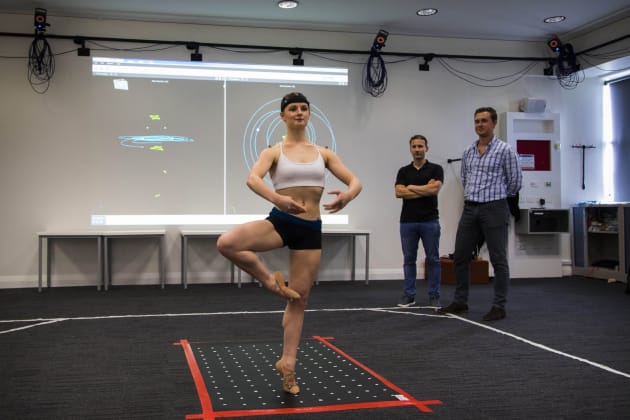Putting your own spin on it
What is the recipe for a pirouette?
If you’re thinking that the answer will be about physical skills and attributes, prepare to be surprised. When Simon Dow, Level 5-7 co-ordinator and Level 7 classical teacher at the Australian Ballet School, shares his “brief” response, he gives attitude and approach as much emphasis as physical skills.
“Courage,” he muses. “The willingness to feel out of control. Fantastic full-body rhythm. Co-ordination. An understanding of the sequence of body movement to spotting or head movement. Daring. An ability to play, because a lot of people make pirouettes very serious and you have to have a youthful approach to play to turn. Patience … and a strong, innate (although it can be developed) sense of balance while moving. Good vision is important – I think a lot of people leave that out. Your body sense has to be really strong – your spatial awareness.”
Over at WAAPA, lecturer in classical ballet Andries Weidemann and research fellow Luke Hopper have been conducting research into pirouettes using motion capture technology. Their perspective takes as its starting point the idea that the human body is physically unsuited to turning in the way that a pirouette demands. “If you think about a spinning top,” says Hopper, “its low, light and wide shape is what keeps it spinning and spinning. [By comparison] a dancer is quite tall, they’re relatively dense -- full of muscles and bones – and so they don’t spin as fast. The research is then asking, how are dancers managing to do three or more turns?”
Hopper and Weidemann’s findings may be surprising to some teachers and students, although probably not to Dow, with his theories about the importance of play. Essentially, says Hopper, the secret is that the dancer has to be able to vary what he or she does in the turn. “We have to move with a level of inconsistency in order to be able to [turn] successfully,” Weidemann explains, “So you’re not rigid in the turn. You’re continuously adjusting. That whole thing that teachers say, ‘You’ve got to hold the position,’ implies that the stronger a dancer holds themselves, the more they’ll be able to turn, whereas what we found with the motion capture is that actually there’s a massive amount of variability within the turn, where the dancer changes position in order to maintain balance.” Balance, says Weidemann, needs to be dynamic rather than static. “It’s not about having this one fixed technique,” adds Hopper. “It’s about having the ability to manage and adapt, and to be flexible in your approach to achieve a good turn.”
If you’re thinking that good dancers don’t appear to be adjusting, Hopper and Weidemann agree. It’s about giving the impression of consistency, says Weidemann. “[A good turner] makes it look like they’re on balance, but actually, they’re always adjusting,” continues Hopper.
Want to know more? This is an excerpt from an article on pirouettes in the April/May issue of Dance Australia. For the full article, buy the new issue at your favourite magazine retailer or subscribe here, or purchase an online copy via the Dance Australia app.
Plus find out an examiner's top tips for pirouettes! RAD examiner and co-principal/co-director of Alegria Dance Studios Hilary Kaplan gives us the low-down on perfecting your pirouette here.




